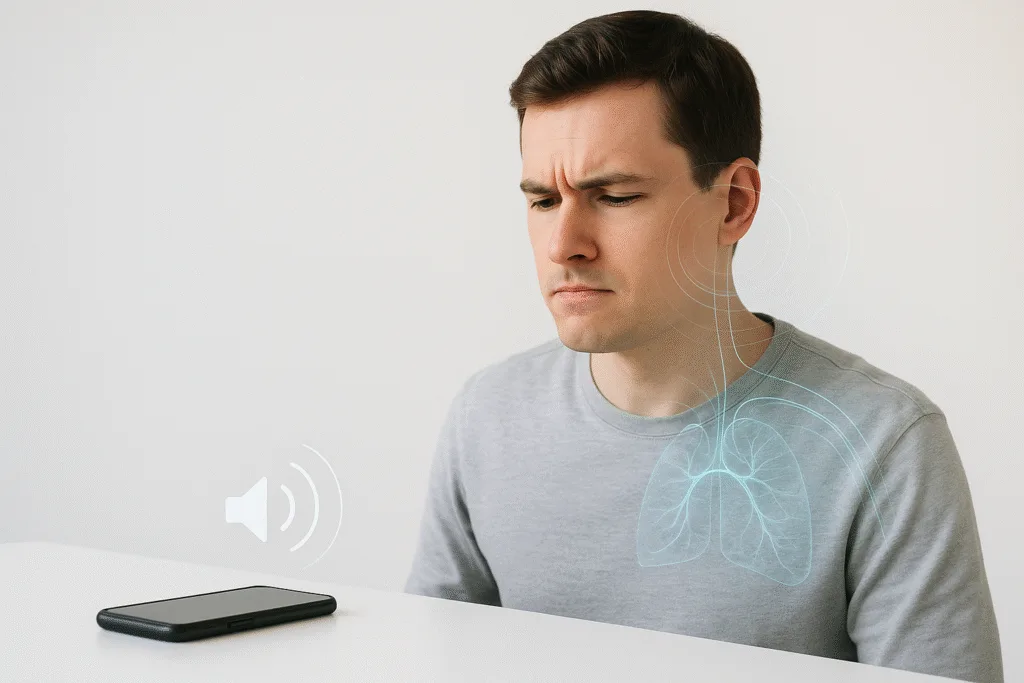The notification reflex test shows how your body responds instantly to a phone alert — long before you consciously decide to react. A single notification sound can trigger micro-movements, heart-rate changes and attention shifts in a fraction of a second. This experiment reveals how deeply your nervous system has been conditioned by digital cues.
Even when your phone is face down, your brain reacts automatically. You don’t choose your first reaction — your body reacts first, and your brain interprets it later.
Below is the complete notification reflex test.
Step 1 — Place Your Phone Face Down With Sound On
Put your phone face down and keep notifications enabled.
Why this matters
This removes screen-based influence and isolates your auditory reflex response.
Step 2 — Sit Still and Observe Your Resting State
Relax your shoulders, your jaw, your hands and your breathing.
Why
This creates a clean baseline to compare your physiological changes once the sound occurs.
Step 3 — Ask Someone to Trigger a Notification Randomly
Ask someone to send a message, call, or trigger a sound without telling you when.
What happens
Your brain quietly enters an anticipatory state before the sound even occurs — the early stage of the notification reflex test.
Step 4 — Observe Your First Micro-Reaction
When the notification plays, pay attention to small involuntary movements such as:
- slight eyebrow lift
- tiny head movement
- micro-pause in breathing
- subtle shoulder shift
- quick eye movement toward the phone
Why
These automatic responses are part of the orienting reflex, one of the fastest survival mechanisms in the human nervous system.

Step 5 — Check Your Heart Rate Immediately After the Sound
Place two fingers on your wrist or neck after the next alert.
What you’ll notice
A brief acceleration or slight pause — both are signs of autonomic activation triggered by the notification reflex test.
Step 6 — Notice Where Your Eyes Drift
Even with the phone facedown, your eyes instinctively move toward it.
Why
Your brain has learned to treat notification sounds as relevant signals of social reward, information or urgency.
Step 7 — Resist Checking the Phone for 10 Seconds
Do not flip the phone. Do not unlock it.
Just wait.
What happens
A small wave of internal tension builds.
Your attention becomes temporarily “captured.”
Why
This is dopamine anticipation — your brain wants to resolve the uncertainty created by the alert.
Step 8 — Flip the Phone Over Without Opening the Notification
Turn the phone face up but do not unlock the screen.
Why
Visual confirmation reduces part of the tension, but does not close the dopamine loop.
Your body remains slightly activated.
Step 9 — Now Unlock the Phone and Read the Notification
Open the alert and read the message.
What changes
Breathing stabilizes, heart rate returns to baseline, and attention expands outward again.
Why
Your brain “completes” the loop.
Uncertainty ends, and the nervous system resets.
Step 10 — What This Habit Reveals About You
The notification reflex test shows powerful insights about your relationship with digital cues:
1. Your reaction is involuntary
The body responds before conscious awareness.
2. Notifications hijack attention
Sound cues interrupt cognitive processes instantly.
3. Dopamine anticipation drives urgency
Your brain wants to resolve the unknown stimulus.
4. Heart rate responds in milliseconds
Your autonomic system evaluates notifications as potentially important.
5. Waiting increases internal activation
The longer the alert remains unchecked, the stronger the tension.
6. Notifications condition long-term behavior
Repeated exposure strengthens the reflex loop over time.
The notification reflex test proves that digital interactions are not neutral — they trigger biological responses you cannot prevent.
Next Everyday Experiment You Should Try
If the notification reflex test showed how alerts trigger fast physiological responses, the next experiment reveals how your posture shifts your emotional state in just a few seconds.
Recommended next article:
“The Posture Mood Shift Test — How Your Spine Position Changes Your Emotional State”
